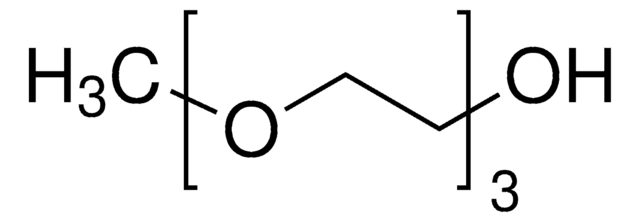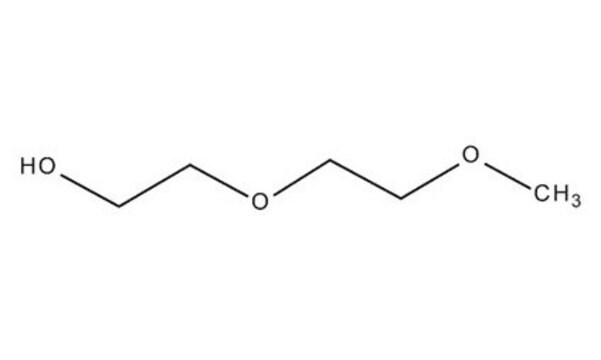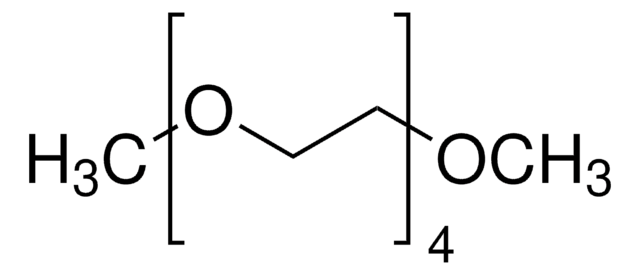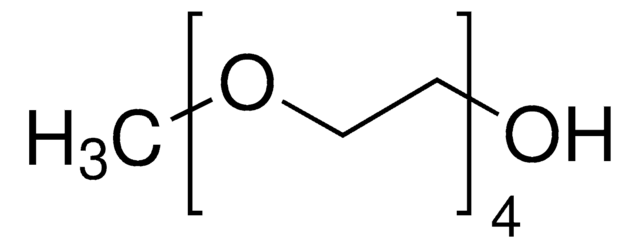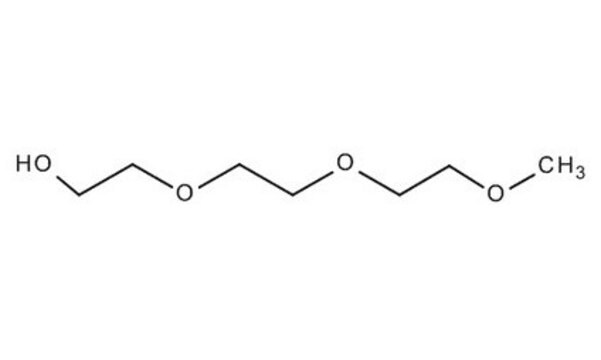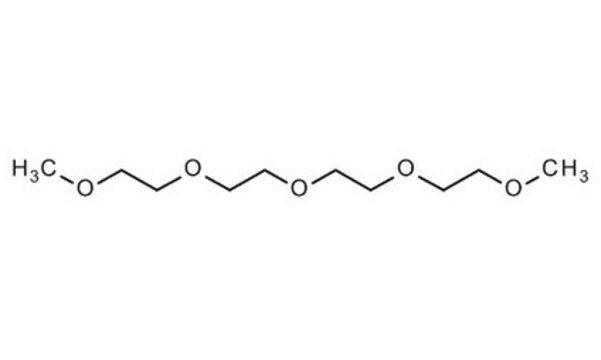568554
Tri(ethylene glycol) monoethyl ether
technical grade
Sinonimo/i:
Triethylene glycol monoethyl ether, Ethyltriglycol
About This Item
Prodotti consigliati
Grado
technical grade
Livello qualitativo
Indice di rifrazione
n20/D 1.438 (lit.)
P. ebollizione
256 °C (lit.)
Densità
1.020 g/mL at 25 °C (lit.)
Stringa SMILE
CCOCCOCCOCCO
InChI
1S/C8H18O4/c1-2-10-5-6-12-8-7-11-4-3-9/h9H,2-8H2,1H3
WFSMVVDJSNMRAR-UHFFFAOYSA-N
Cerchi prodotti simili? Visita Guida al confronto tra prodotti
Categorie correlate
Codice della classe di stoccaggio
10 - Combustible liquids
Classe di pericolosità dell'acqua (WGK)
WGK 3
Punto d’infiammabilità (°F)
269.6 °F - closed cup
Punto d’infiammabilità (°C)
132 °C - closed cup
Dispositivi di protezione individuale
Eyeshields, Gloves, multi-purpose combination respirator cartridge (US), type N95 (US)
Scegli una delle versioni più recenti:
Possiedi già questo prodotto?
I documenti relativi ai prodotti acquistati recentemente sono disponibili nell’Archivio dei documenti.
I clienti hanno visto anche
Il team dei nostri ricercatori vanta grande esperienza in tutte le aree della ricerca quali Life Science, scienza dei materiali, sintesi chimica, cromatografia, discipline analitiche, ecc..
Contatta l'Assistenza Tecnica.